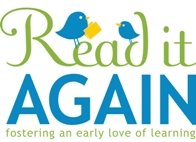5 Things You Can Teach Your Child as You Read The Snowy Day
Extend the Learning with
Story-Based Play
Adding an element of play is another way to deepen your child’s understanding of concepts within and beyond a story. According to Hall (1991), young children often develop advanced literacy skills when they engage in play related to a familiar story. Many complex literacy skills develop naturally when the story and play intersect, setting the stage for your child to learn to read and write.
It’s easy. Take a great story, gather toys that align with that story, and get out of the way. Your child will do the rest. The goal is to allow the play to evolve naturally. You’ll be surprised by the amount of learning transferred and reinforced through this type of play.
Here’s Why We Love These Specific Products:
They have direct connections to the book.
They reinforce new vocabulary.
They encourage imaginative play
They make it easy to re-enact parts of the story.
They often take learning beyond the confines of the story.
Few require batteries, screens, or electricity.
If you purchase something through one of our links, you won't pay a penny more, but we’ll earn a tiny commission which helps keep the lights on.
Additional Keats’ Titles Featuring Peter as the Main Character
The Snowy Day by Ezra Jack Keats is a considered a classic. With his modern, collage illustrations and sparse text, Keats leaves room for readers to use their own imaginations to make Peter’s story their own.
Listed below are 5 educational concepts you can sneak in as you read this book with your child.
Seasons & Weather
This story is set in winter, providing a great opportunity to teach preschoolers about seasons and different types of weather associated with each season. You can discuss the characteristics of winter, such as snow and cold temperatures, and help children understand the pattern in which seasons change.Exploration & Observation
As Peter explores his snowy neighborhood, he makes many observations.
Use this book to help your child hone his/her observation skills by discussing what Peter sees and experiences.Problem Solving
The snowy landscape presents Peter with challenges that he must overcome. Engage your preschooler in discussions about problem-solving and encourage them to think about creative solutions to everyday challenges.Sequencing
This book follows a sequential narrative as Peter experiences a day on his own in the snow. Help your child begin to understand the concept of sequencing, by pointing out examples as you read.Imagination
The story highlights Peter's imaginative play in the snow. Imagination and creativity are cornerstones for your child’s future learning. Later in this blog post there’s information on story-based play which offers a great way to encourage the use of imagination.
Meet the Author
Ezra Jack Keats (1916–1983) was a pioneering American author and illustrator renowned for his groundbreaking contributions to children's literature. Born Jacob Ezra Katz in Brooklyn, New York, Keats achieved widespread acclaim for his picture book "The Snowy Day," published in 1962. This timeless classic featured Peter, an African American boy, exploring the wonders of a snowy day—an inclusive narrative that broke new ground in the representation of diverse characters in children's literature. Keats continued to create impactful stories, such as "Whistle for Willie" and "Peter's Chair," emphasizing the everyday experiences of children with warmth and authenticity. His distinctive collage illustrations and storytelling style left an enduring legacy, earning him the Caldecott Medal and influencing generations of readers and fellow authors.











